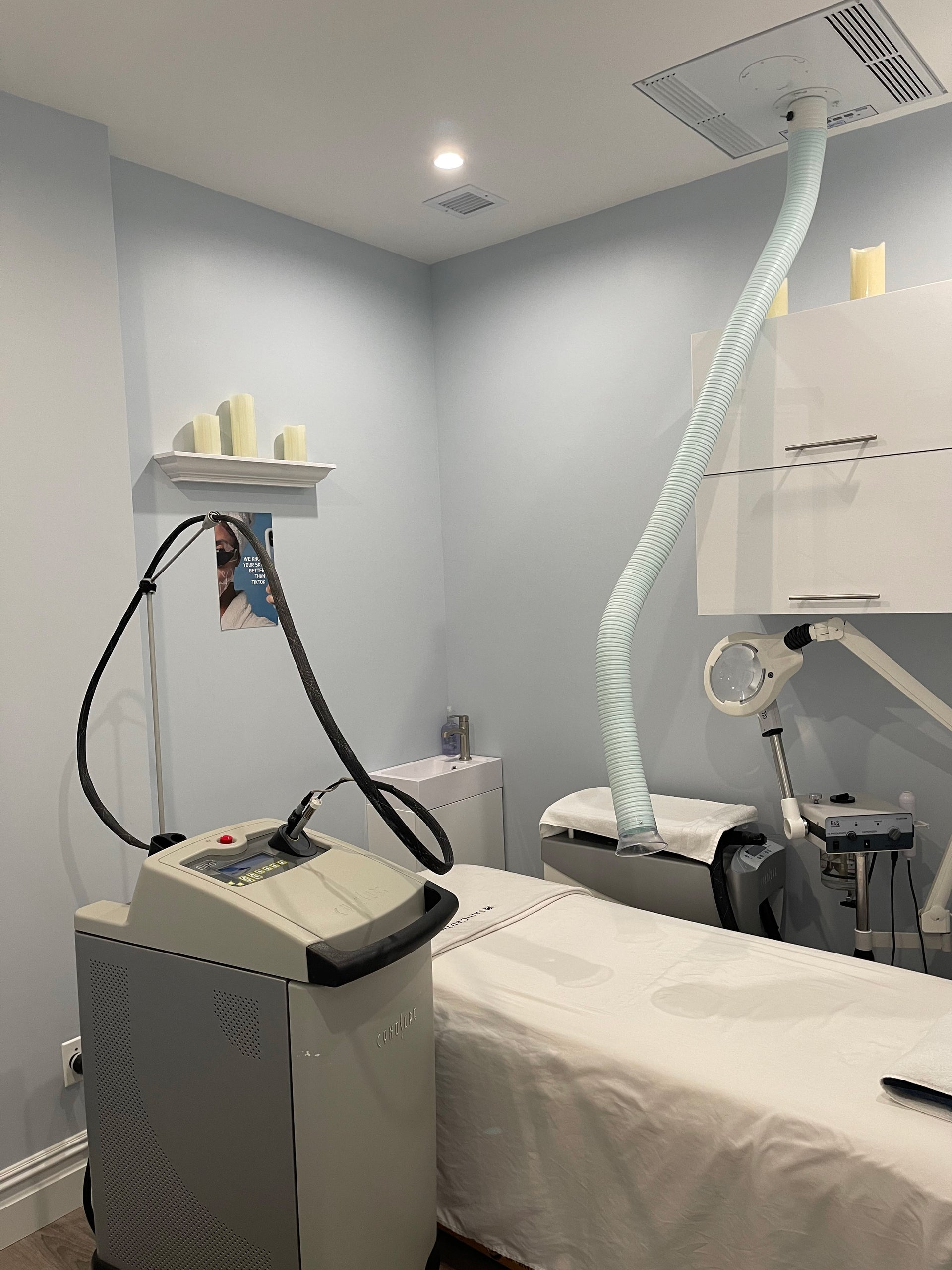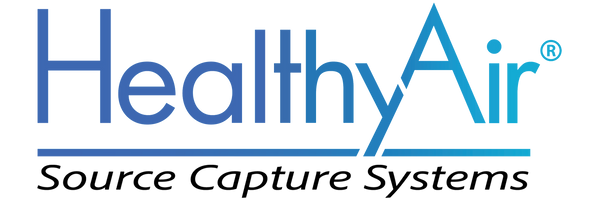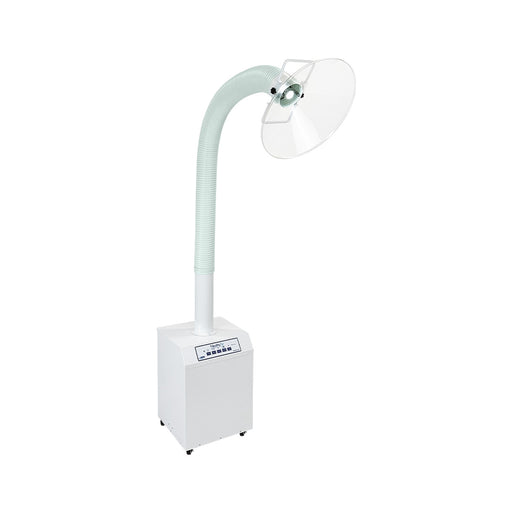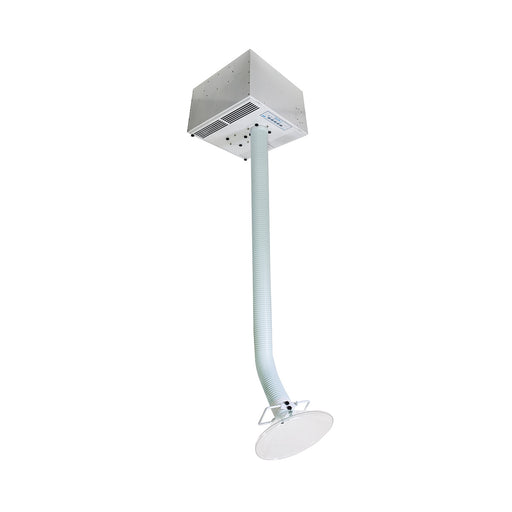Capture Smoke & Skin Cell Biodebris During Laser Hair Removal & Skincare Processes
Need help selecting the best air purification system for your office?
Contact us and we'll gladly help you identify the best solution for you.
Ventilation Systems for Dermatology Offices
4 Items
See All ItemsThe Importance of Proper Ventilation in Dermatology Offices

When you step into a dermatologist’s office, the last thing anyone is thinking about is the air quality. Yet, clean and properly ventilated air is essential for the health and safety of both patients and staff. Consulting with a board-certified dermatologist ensures that you receive specialized skin care in a safe environment.
Dermatology offices often deal with chemicals, vapors, and dust from treatments, which can quickly accumulate in enclosed spaces without the right ventilation systems in place. Offices providing electrosurgical procedures and laser treatments also have to deal with surgical smoke.
Ventilation systems for dermatology offices go beyond just moving air around—they actively work to filter out harmful particles, improve air exchange, and maintain a fresh, safe environment. Whether it’s fumes from sterilization, odors from medical procedures, or contaminants from skincare products, the right ventilation system is crucial for keeping everyone comfortable and protected.
Compliance and Standards
Meeting regulations like the International Mechanical Code (IMC) and guidelines from the Occupational Safety and Health Administration (OSHA) isn’t just good practice—it’s essential. These standards ensure that dermatologist offices provide proper ventilation to maintain a safe and healthy environment for both employees and patients.
Adhering to local building code requirements is equally important. Proper ventilation isn’t just about installing an exhaust system; it’s about ensuring exhaust inlets are located strategically to remove harmful particles and maintain adequate air exchange. Compliance not only minimizes risks but also demonstrates a commitment to safety and professionalism.
Benefits of meeting these standards include:
- Reduced exposure to contaminants for staff and patients.
- Improved indoor air quality, which creates a more comfortable environment.
- Enhanced reputation as a safe and professional medical facility.
Key Features of Effective Ventilation Systems
Not all ventilation systems are created equal. For dermatologist offices, certain features stand out in ensuring proper air quality.
Filtration Technology
Advanced filters, like eHEPA® technology, are designed to capture fine dust particles, fumes, and volatile organic compounds (VOCs). These filters go beyond standard models to tackle even the smallest airborne contaminants, ensuring your office stays fresh and safe. Dermatology offices, where skin treatments and chemical use are common, benefit immensely from such robust filtration systems. Additionally, advanced filters are crucial in capturing harmful particles generated during procedures that generate smoke, creating a safe environment for both medical staff and patients.
Source Capture Systems for Electrosurgical and Laser Procedures
A source capture system works by removing pollutants directly at their source—before they can spread throughout the room. Source capture systems are effective in managing surgical plume generated during electrosurgical and laser dermatological procedures, ensuring a safe environment for both medical staff and patients. For example, when using lasers or performing treatments that release odors or vapors, a source capture system prevents these contaminants from lingering in the air. This feature is especially useful in multi-station setups, ensuring that each treatment area remains properly ventilated.
Installation Options
Different spaces call for different solutions. Ventilation systems can be tailored to fit the unique layout of your dermatology office:
- Ceiling-Mounted Units: Ideal for larger offices, providing comprehensive coverage.
- Wall-Mounted Systems: Great for targeted air purification in specific rooms.
- Portable Options: Flexible and cost-effective for smaller spaces or temporary setups.
Choosing the right ventilation system involves evaluating factors like the size of your office, how many stations you have, and the types of procedures performed.
The Benefits of Proper Ventilation in Removing Toxic Gas and Dust
Investing in a high-quality ventilation system offers more than just clean air—it also delivers:
- Health Protection: Removes harmful particles, vapors, and odors, keeping everyone safe.
- Comfort: Creates a more pleasant environment for patients, enhancing their experience.
- Energy Efficiency: Systems with heat exchangers optimize energy use, reducing costs.
- Regulatory Compliance: Ensures your office meets all local and national standards.
- Long-Term Savings: A well-maintained system reduces the need for costly repairs or replacements.
Health Risks Associated with Poor Air Quality and Surgical Smoke
Failing to properly ventilate a dermatology office can lead to serious consequences. Common pollutants include:
- Chemical Fumes: Released during sterilization or skincare treatments.
- Dust and Particles: From equipment or procedures like laser resurfacing.
- Moisture and Humidity: Leading to mold growth if not managed.
Surgical smoke is an occupational hazard and a respiratory tract irritant, necessitating proper ventilation to protect medical professionals and patients from harmful particles and gases.
Exposure to these can cause immediate symptoms like headaches, dizziness, or irritation, and long-term effects such as respiratory issues. Proper ventilation mitigates these risks, ensuring a safer environment for all.
Surgical Smoke and Ventilation Solutions
Surgical smoke is a significant concern in dermatology, particularly during electrosurgical and laser procedures. The smoke generated during these procedures poses a significant risk to the health of dermatologists, nurses, and patients. This surgical smoke is a biochemical hazard comparable to chronic second-hand smoking, containing toxic gases and vaporized tissue particles.
The plume generated during laser hair removal and other dermatological treatments can be particularly hazardous, as it contains toxic gases and particles that can be inhaled. To mitigate this risk, dermatologists can use surgical smoke evacuation systems, which effectively capture and filter the plume generated during procedures. These systems help create a smoke-free environment, reducing the risk of respiratory tract irritation and other health problems.
In addition to evacuation systems, dermatologists can also use ventilation solutions, such as HEPA filters and air purifiers, to improve indoor air quality and reduce the risk of exposure to surgical smoke. By implementing these solutions, dermatologists can create a safer working environment for themselves and their patients, reducing the risk of premature skin aging and other health problems associated with surgical smoke exposure.
Special Considerations for Laser Hair Removal
Laser hair removal is a popular dermatological treatment that can generate significant amounts of surgical smoke. To minimize the risks associated with laser hair removal, dermatologists should use a surgical smoke evacuation system specifically designed for laser procedures. These systems can capture the plume generated during laser hair removal, reducing the risk of exposure to toxic gases and vaporized tissue particles.
In addition to evacuation systems, dermatologists should also take steps to improve indoor air quality, such as using HEPA filters and air purifiers. It is also important for dermatologists to follow proper ventilation protocols during laser hair removal procedures, including using a well-ventilated room and avoiding the use of recirculated air.
By taking these precautions, dermatologists can minimize the risks associated with laser hair removal and create a safer working environment for themselves and their patients. Board-certified dermatologists should be aware of the potential risks associated with laser hair removal and take steps to mitigate them, including using surgical smoke evacuation systems and improving indoor air quality. By prioritizing patient safety and taking steps to minimize the risks associated with laser hair removal, dermatologists can provide high-quality care and reduce the risk of premature skin aging and other health problems.
Maintenance and Efficiency
Keeping your ventilation system in top shape doesn’t have to be a hassle. Modern systems are designed with ease of maintenance and energy efficiency in mind.
- Regular Filter Changes: HEPA filters should be replaced periodically to maintain performance.
- Energy Optimization: Systems with features like heat exchangers reduce energy use without compromising efficiency.
- Routine Inspections: Ensuring that exhaust inlets and source capture systems are functioning correctly helps prevent issues before they arise.
These steps not only keep your system running smoothly but also make it more cost-effective in the long run.
Conclusion
Effective ventilation systems for dermatology offices are more than just a luxury—they’re a necessity. From protecting health to meeting compliance standards, these systems play a vital role in creating a safe, professional, and welcoming environment.
We’re here to help once you’re ready to evaluate your current air quality solutions Together, we can ensure your dermatology office is equipped with the best ventilation system to meet your unique needs. Clean air starts here!
- Patented eHEPA (electrostatic HEPA) filtration technology sets the industry standard
- 3-In-1 HealthyAir® eHEPA® filtration technology eliminates the need for multiple air filtration devices
- Simultaneously collect surgical smoke, chemical fumes, and fine airborne skin debris and microorganisms
- Portable flood units offer a convenient easy-to-use and cost-effective solution
- Ceiling-Mount units offer fixed-positioning to free valuable floor space in smaller office and suite settings
HealthyAir® Source Capture® Systems
HealthyAir® Source Capture® Systems effectively evacuate surgical smoke, toxic vapors and harmful fine skin debris from the procedure area, thereby producing a healthy breathing zone for both clinicians and patients.
Industry Research and Reports :
Surgical Smoke in Dermatology: Its Hazards and Management
Download NowAlleviating the dangers of surgical smoke
Download Now






